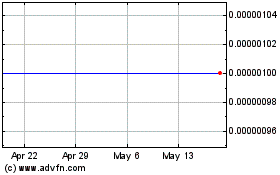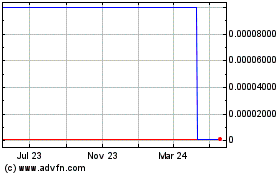Aeolus Announces Publication of Data Demonstrating Efficacy of AEOL
10150 in Animal Model of Lung Radiation Exposure; Models Developed
for Pivotal Efficacy Studies
MISSION VIEJO, CA--(Marketwired - Feb 10, 2014) - Aeolus
Pharmaceuticals, Inc. (OTCQB: AOLS) Three papers published in
Health Physics, Volume 106, Number 1 (January 2014)
- "A Pilot Study in Rhesus Macaques to Assess the Treatment
Efficacy of A Small Molecular Weight
Catalytic Metalloporphyrin Antioxidant (AEOL 10150) in
Mitigating Radiation-induced Lung Damage"
- "Characterization of the Dose Response Relationship for
Lung Injury Following Acute Radiation Exposure in
Three Well-established Murine Strains"
- "The Delayed Pulmonary Syndrome Following Acute High-dose
Irradiation: A Rhesus Macaque Model"
Aeolus Pharmaceuticals, Inc. (OTCQB: AOLS) today announced the
publication of data from animal model studies and a pilot efficacy
study in non-human primates (NHPs) demonstrating the efficacy of
AEOL 10150 as a medical countermeasure (MCM) against the effects of
radiation exposure on the lungs. Three papers on studies funded by
Aeolus, the National Institute of Allergy and Infectious Diseases
(NIAID), part of the National Institutes of Health (NIH), and
Aeolus using funds provided by the Biomedical Advanced Research and
Development Authority (BARDA were published in the journal
Health Physics, volume 106, number 1, in January 2014.
Aeolus is a biotechnology company focused on developing compounds
to protect against radiological and chemical threats with
significant funding from the US government.
The key findings described in the publications include:
- Treatment of NHPs with AEOL 10150 for 28 days increased
survival at 180 days after exposure from 0 to 28.5 percent in the
pilot study
- Animals receiving AEOL 10150 showed a 28 percent reduction in
pneumonitis and fibrosis and a 45 percent reduction in pleural
effusions
- Animals receiving AEOL 10150 required 33 percent less
dexamethasone support (standard supportive care) than untreated
animals
- The surviving animals exhibited normal blood oxygen levels and
respiratory rates at the end of the study (6 months after
exposure)
- AEOL 10150 significantly reduced macrophage counts and
TGF-beta1 levels in treated animals
- Dose response relationship for CBA, C57LJ and C57B6 mice
following acute radiation exposure to the lungs have been
defined
- The dose response relationship for the rhesus macaque following
acute radiation exposure to the lungs has been defined
In June 2012, Aeolus presented the choice of species and model
designs to the U.S. Food and Drug Administration (FDA) and received
concurrence from the agency that the species and models were
appropriate. A protocol for an efficacy study in NHPs and a
protocol for six murine studies were then submitted for FDA review.
FDA has provided comments on the NHP protocol. That study was
initiated last year and is expected to be complete in the third
quarter of 2014. The murine study protocols were submitted in
December and comments are expected shortly. Once comments are
received, Aeolus plans on initiating the six studies
immediately.
"The collection of animal model and efficacy data published in
Health Physics is a perfect example of the benefits of the
collaboration between Aeolus and our partners at BARDA, NIAID and
the Medical Countermeasures Against Radiological Threats (MCART)
consortium," stated John McManus, Chief Executive Officer of
Aeolus. "Our scientific partners at MCART have been researching and
developing animal models for decades, and we are fortunate to have
leaders in the field performing our research. As the collection of
articles in the journal shows, the work sponsored by Aeolus, BARDA
and NIAID, with input from the FDA, has created a pathway for
testing and approval of MCMs for radiation-induced lung
injury."
"The improvements in survival, respiratory rates and blood
oxygenation and reduction in lung damage in animals treated with
AEOL 10150 are very encouraging," continued Mr. McManus. "AEOL
10150 continues to demonstrate effectiveness as an MCM against
radiological and chemical injury and represents a potential
solution to multiple threats, in addition to its ultimate potential
use in cancer radiotherapy. We expect to report additional results
from our radiation and chemical programs as the year
progresses."
The animal model development work was funded through NIAID and
Aeolus' advanced research and development contract from BARDA. The
BARDA contract supports the development of AEOL 10150 as an MCM for
the lung sub-syndrome of acute radiation syndrome (Lung-ARS). The
five year, $118 million, cost-plus contract, awarded in February
2011, includes funding for the development of mouse and non-human
primate models, as well as efficacy studies in both species to
determine the optimal dose and dosing regimen to maximize AEOL
10150's efficacy against radiation damage to the lungs.
In addition, the NIAID Radiation/Nuclear Medical Countermeasures
development program currently is studying AEOL 10150 as an MCM for
radiation exposure to the gastrointestinal tract. NIH CounterACT is
evaluating AEOL 10150 as an MCM against nerve agent, chlorine gas
and mustard gas exposures.
About the BARDA Contract
In addition to supporting the cost of development of AEOL 10150
as an MCM for Lung-ARS, the Company believes that the preclinical
chemistry, manufacturing and control data and the toxicology and
safety studies completed or planned under the BARDA contract will
be supportive of the Company's oncology development program. A
procurement of AEOL 10150 for the Strategic National Stockpile
could occur following FDA approval, if obtained, or sooner under an
Emergency Use Authorization. The value of a procurement, if any, is
not included in the contract value announced herein.
About Acute Radiation Syndromes (ARS)
Acute radiation syndromes (ARS) refers to a series of
potentially lethal syndromes that develop after exposure to acute,
high-dose radiation from nuclear detonations, "dirty" bombs or
nuclear plant accidents. Two acute syndromes, the hematopoietic
(bone marrow) and early-onset gastrointestinal (GI) syndromes,
develop within the first one to seven days following exposure.
Depending on the level and location of radiation exposure,
lethality from the bone marrow and GI syndromes can be reduced or
avoided with proper treatment, including supportive care (fluids
and antibiotics) and administration of granulocyte-colony
stimulating factors.
Experience with nuclear accident victims suggests that for
patients who survive the GI and bone marrow syndromes, the lung
syndrome (Lung-ARS) and delayed effects of acute radiation exposure
(DEARE) become the primary cause of death. There are no current
treatments for Lung-ARS. AEOL-10150 is the only compound in
advanced development for treatment of this syndrome.
About BARDA
The Biomedical Advanced Research and Development Authority
(BARDA), within the Office of the Assistant Secretary for
Preparedness and Response in the U.S. Department of Health and
Human Services, provides an integrated, systematic approach to the
development and purchase of the necessary vaccines, drugs,
therapies, and diagnostic tools for public health medical
emergencies. BARDA was established to provide funding and
coordination to address challenges in medical countermeasure
development.
BARDA was created to increase funding for advanced research and
development and to better coordinate the U.S. government's medical
countermeasure development and acquisition process. BARDA manages
Project BioShield, which includes the procurement and advanced
development of medical countermeasures for chemical, biological,
radiological, and nuclear agents, as well as the advanced
development and procurement of medical countermeasures for pandemic
influenza and other emerging infectious diseases that fall outside
the scope of Project BioShield.
About AEOL 10150
AEOL 10150 is a broad-spectrum catalytic antioxidant
specifically designed to neutralize reactive oxygen and nitrogen
species. The neutralization of these species reduces oxidative
stress, inflammation and subsequent tissue damage resulting from
radiation exposure. The Company believes that AEOL 10150 could have
a profound beneficial impact on people who are exposed to high
doses of radiation.
AEOL 10150 has already performed well in animal safety studies,
was well-tolerated in two human clinical trials and has
demonstrated statistically significant survival efficacy in
multiple Lung-ARS studies in animals. AEOL 10150 also currently is
in development for use as both a therapeutic and prophylactic drug
in cancer patients.
About Aeolus Pharmaceuticals
Aeolus Pharmaceuticals is developing a platform of a new class
of broad-spectrum, catalytic-antioxidant compounds that protect
healthy tissue from the damaging effects of radiation. Its first
compound, AEOL 10150, is being developed, with funding from the
U.S. Department of Health and Human Services, as a medical
countermeasure against chemical and radiological weapons. Its
initial target indications are as a protective agent against the
effects of acute radiation syndrome and delayed effects of acute
radiation exposure. Aeolus' strategy is to leverage the substantial
investment in toxicology, manufacturing and preclinical and
clinical studies of AEOL 10150 made by U.S. government agencies,
including the contract with BARDA valued, with options, at up to
$118.4 million, to efficiently develop the compound for use in
oncology. For more information, please visit Aeolus's corporate
website at www.aeoluspharma.com.
Forward-Looking Statements
The statements in this press release that are not purely
statements of historical fact are forward-looking statements. Such
statements include, but are not limited to, those relating to
Aeolus' product candidates, as well as its proprietary technologies
and research programs, the Company's potential initiation of large
efficacy studies in mice and NHPs, as well as a phase 1 study in
healthy volunteers, the BARDA contract, and the expected use of
proceeds from the financing. Such forward-looking statements
involve known and unknown risks, uncertainties and other factors
that may cause Aeolus' actual results to be materially different
from historical results or from any results expressed or implied by
such forward-looking statements. Important factors that could cause
results to differ include risks associated with uncertainties of
progress and timing of clinical trials, scientific research and
product development activities; difficulties or delays in
development, testing and obtaining regulatory approval; the need to
obtain funding for pre-clinical and clinical trials and operations;
the scope and validity of intellectual property protection for
Aeolus' product candidates, proprietary technologies and their
uses; competition from other biopharmaceutical companies; and
whether BARDA exercises one or more additional options under the
its contract with Aeolus. Certain of these factors and others are
more fully described in Aeolus' filings with the Securities and
Exchange Commission, including, but not limited to, Aeolus' Annual
Report on Form 10-K for the year ended September 30, 2013. Readers
are cautioned not to place undue reliance on these forward-looking
statements, which speak only as of the date hereof.
Contact: John McManus President and Chief Executive Officer
Aeolus Pharmaceuticals, Inc. 1-(949) 481-9820
Aeolus Pharmaceuticals (CE) (USOTC:AOLS)
Historical Stock Chart
From Dec 2024 to Jan 2025

Aeolus Pharmaceuticals (CE) (USOTC:AOLS)
Historical Stock Chart
From Jan 2024 to Jan 2025
